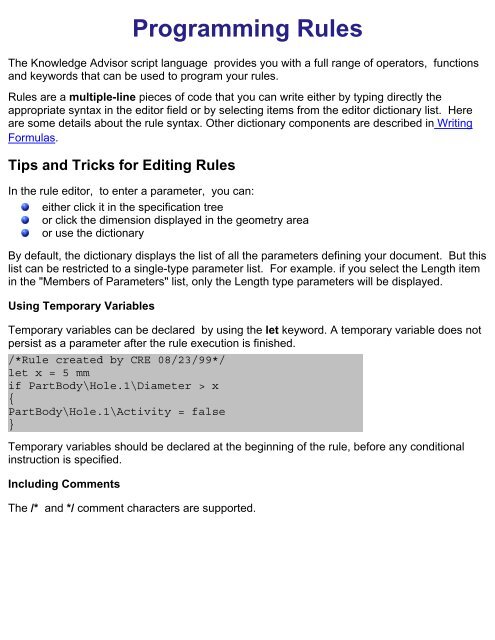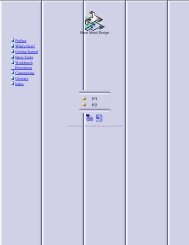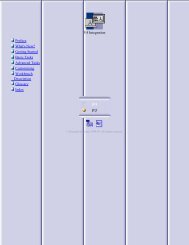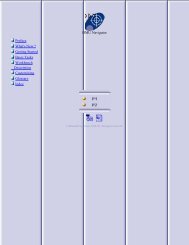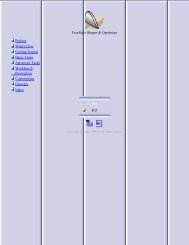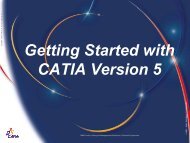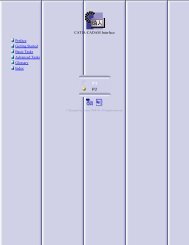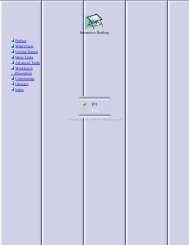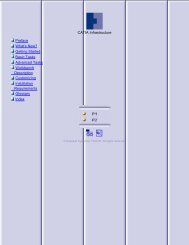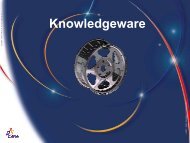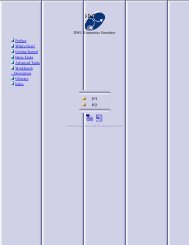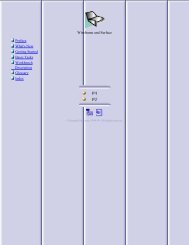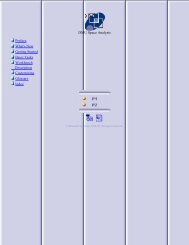Knowledge Advisor - catia
Knowledge Advisor - catia
Knowledge Advisor - catia
- No tags were found...
You also want an ePaper? Increase the reach of your titles
YUMPU automatically turns print PDFs into web optimized ePapers that Google loves.
Programming RulesThe <strong>Knowledge</strong> <strong>Advisor</strong> script language provides you with a full range of operators, functionsand keywords that can be used to program your rules.Rules are a multiple-line pieces of code that you can write either by typing directly theappropriate syntax in the editor field or by selecting items from the editor dictionary list. Hereare some details about the rule syntax. Other dictionary components are described in WritingFormulas.Tips and Tricks for Editing RulesIn the rule editor, to enter a parameter, you can:either click it in the specification treeor click the dimension displayed in the geometry areaor use the dictionaryBy default, the dictionary displays the list of all the parameters defining your document. But thislist can be restricted to a single-type parameter list. For example. if you select the Length itemin the "Members of Parameters" list, only the Length type parameters will be displayed.Using Temporary VariablesTemporary variables can be declared by using the let keyword. A temporary variable does notpersist as a parameter after the rule execution is finished./*Rule created by CRE 08/23/99*/let x = 5 mmif PartBody\Hole.1\Diameter > x{PartBody\Hole.1\Activity = false}Temporary variables should be declared at the beginning of the rule, before any conditionalinstruction is specified.Including CommentsThe /* and */ comment characters are supported.


